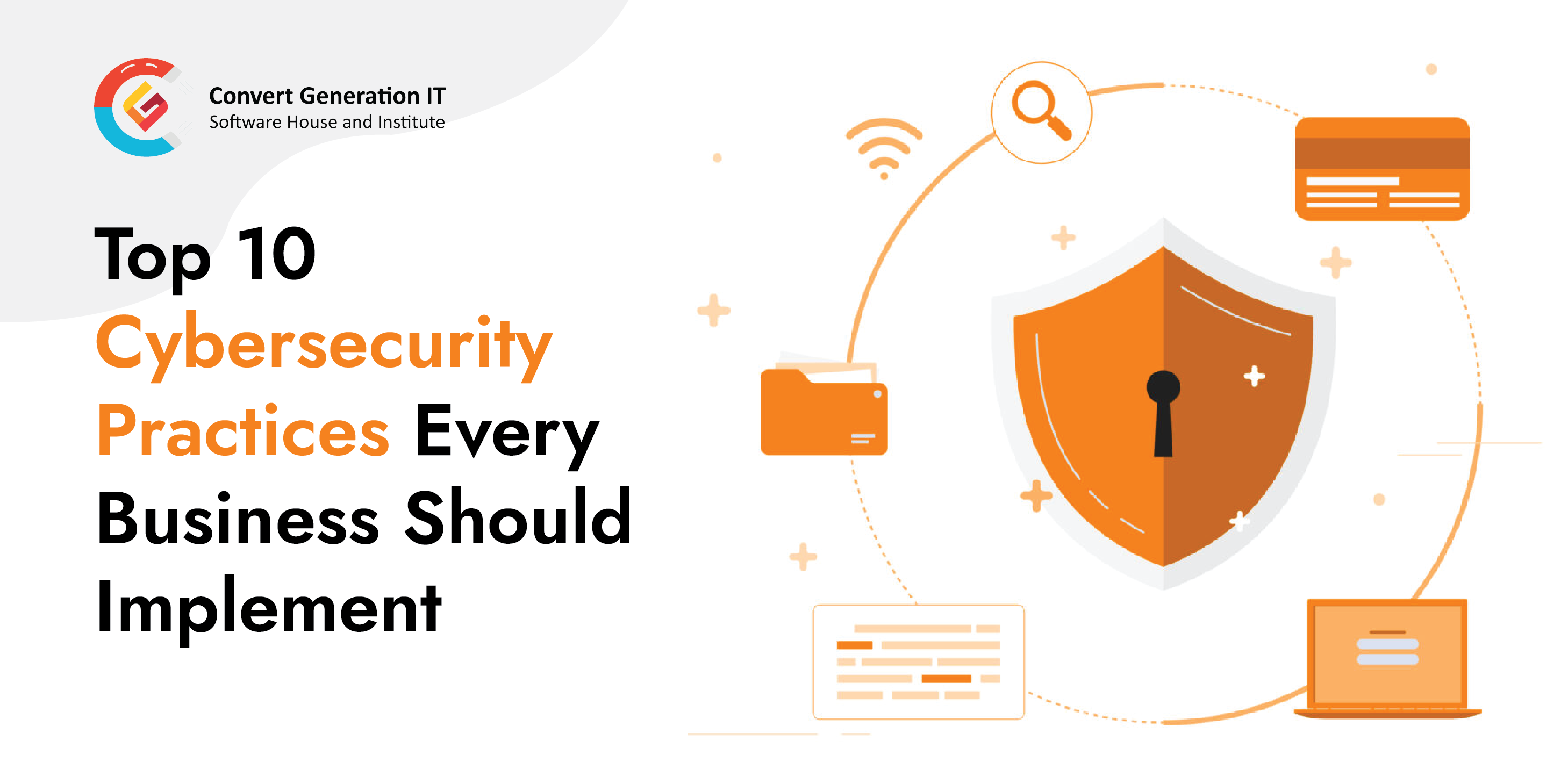
10 Best Cybersecurity Practices Every Business Should Implement
10 Best Cybersecurity Practices for Businesses
In today’s digital era, cybersecurity is key to businesses of any size whether big or small. As cyber attacks grow in their complexity, enterprises need to implement strong cybersecurity practices to protect their confidential data and processes. In this article, you will find the top 10 cybersecurity practices that every business should adopt to lower risks and guarantee secure digital assets for their company.
Cybersecurity Practices: Ensuring Business Safety
In this part, we will take a look at some of the key cybersecurity practices that your company can use to secure its data.
1. Conduct Regular Security Audits
Frequent security audits should be the one of the best cybersecurity practices for the detection of weaknesses in the systems and network infrastructure that belong to you. Using thorough audits, businesses are in a position to take the lead in anticipating and addressing security weaknesses and implementing the required measures to improve their security position.
The conducting of periodic security audits would mean that any existing vulnerabilities would be discovered and acted upon to mitigate the likelihood of cyber breaches and data leaks.
2. Employee Training and Awareness
Workers are often the weakest link in cybersecurity practices. By organizing frequent training and awareness programs employees gain skills that are needed to identify and deal with cybersecurity risks efficiently.
Educating employees on common cyber threats like phishing scams and malware attacks can limit the possibility of human mistakes which eventually lead to the security breach by the employees.
3. Strong Password Policies
Strong password policy is one of the main cybersecurity practices. Formulating password policies, which might prevent unauthorized access to critical data and systems, should be given top priority. Make sure that employees know how to have complex passwords and use multi-factor authentication where possible to add one more level of safety.
The key to minimizing the possibility of inappropriate entry and stealing of credentials is to frequently change the passwords and not utilize the same ones in various profiles.
4. Secure Network Infrastructure
The safety of your network infrastructure should be the first step in your approach to secure your crucial data and restrict unauthorized access. Installing firewalls, intrusion detection systems and encryption protocols is the way to stop external attacks against the network.
Timely renewal of your network devices and software is the other factor to take care of when you fix known vulnerabilities and lower the chances of hackers exploiting them.
5. Data Encryption
Encrypting sensitive data using both transit encryption and at rest protection is a must to keep data’s confidentiality as well as integrity. A risk factor that contributes to the failure of security procedures is the poor encryption protocols. This is dangerous because even if the data gets into the wrong hands, unauthorized access still takes place.
Through the use of encryption, businesses can avert data breaches and conform to the regulations on data protection and privacy which is required by the industries to which they belong.
6. Backup and Recovery Plans
Regular data backup and recovery plans are key prerequisites for mitigating cyber attacks and system malfunction. Through periodic backup of important data and systems, businesses would be able to keep downtime at bay and continue operation, should a security breach be experienced.
Running frequent practice tests for backup and recovery is also required to check their functionality and dependability when needed.
7. Endpoint Security
The security of endpoints, like laptops, mobile devices and desktops, is one of the vital cybersecurity practices to stop the breaching of networks and the spreading of malware. Utilization of endpoint security solutions, e.g. antivirus and device encryption among others, is critical in the fight against the majority of cyber threats.
The fixing of security vulnerabilities using software updates and patches is the key to maintaining the endpoint security of the whole IT infrastructure.
8. Incident Response Plan
Having a proper incident response plan is one of the critical cybersecurity practices, as it is the key to successful incident management and mitigation of any kind of impact on the business. The implementation of explicit processes for detecting, reporting, and resolving incidents involving a security breach can be of great assistance in guaranteeing timely and cohesive action.
Regularly testing and updating your incident response plan is crucial for ensuring its effectiveness and readiness to handle emerging cyber threats.
9. Vendor Risk Management
Many companies rely on their external corporate who provide them with the services or products they need. Nonetheless, the most important cybersecurity practices are created by third party vendors when they are not managed properly.
Developing vendor risk management systems using security assessment conduction and monitoring vendor compliance enables companies to limit the risk of supply chain attacks and data breaches.
10. Continuous Security Monitoring
Security monitoring with continuous control is important for detecting and timely response to security threats. Setting in place effective surveillance gadgets and methods for the organization enables the detection of malicious activity and security penetration promptly.
They can achieve this through the use of a variety of tools such as intrusion detection systems (IDS), firewalls, and data loss prevention (DLP) solutions that continuously monitor their IT infrastructure and network traffic, allowing them to proactively identify and address security threats in the early stages before they develop into critical incidents.
Conclusion
Strong cybersecurity practices must be introduced to protect sensitive information, to ensure business operations and to fight cybersecurity risks. Through the following top 10 cybersecurity practices, businesses get protected from potential threats and thus digital assets are kept safe. Explore our websites CGit & Quick Web Toolkit to enhance your online experience. Contact us to use our cybersecurity services.
FAQs (Frequently Asked Questions)
How often should security audits be conducted?
Security audits should preferably be conducted on an annual basis. However, some organizations working in extensively regulated industries or at high risk of cyber attacks may need more frequent audits.
What is multi factor authentication, and why is it important?
MFA is a multi-factor authentication, which involves providing users with several verification factors (like using passwords, biometrics and one-time passcodes) to get access to sensitive data and systems. In this way, it serves as an extra layer to prevent unauthorized access even if a password is stolen.
Why is data encryption important for businesses?
Cryptographic algorithms are used to render confidential data unreadable. Only those who are authorized have the right to decrypt and extract sensitive information. Ensuring that these are in place is critical for data privacy and data protection legislation.
How often should data backups be performed?
Data backups should be performed regularly, with the frequency depending on the criticality of the data and the risk of data loss. In most cases, daily or weekly backups are sufficient, but organizations with more stringent requirements may opt for more frequent backups.
What are the key components of an incident response plan?
An incident response plan typically includes procedures for detecting security incidents, assessing their severity, containing and mitigating the impact, communicating with stakeholders, and conducting post-incident analysis to prevent future incidents.
How can businesses ensure the security of third party vendors?
Businesses can ensure the security of third-party vendors by conducting thorough security assessments, including evaluating their security policies and practices, conducting regular audits, and requiring vendors to adhere to security standards and regulations.




